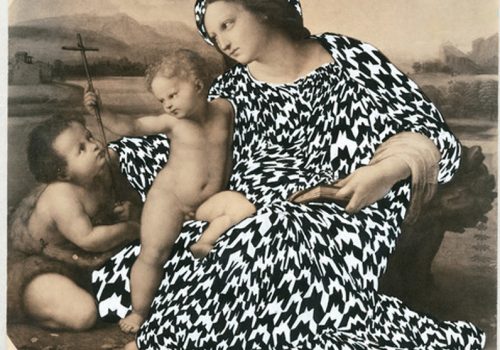Photography appeared in the first half of the nineteenth century and was for a long time the privilege of the wealthy classes who came to have their portrait taken and maintain the posture of their lineage in a prestigious studio. This mechanical technique in the middle of the same century, could reach a wider audience and became more democratic. The spread of lighter and easier to transport camera favored the development of mass photography accessible and practiced by all in the 1950s. The character of anonymous images is distinguished by the fact that it favors the pose of the character. The latter is thus portrayed often a little ill at ease, frozen, embarrassed by the lens, the pause and the eye of the photographer glued to him. Sometimes the opposite happens, at a time when the image skids without any control, the person is surprised in the middle of a movement that escapes the photographer’s will by an out of focus that is not artistic. It is obvious that the purpose of family photography is to keep a memory of the being photographed and make recognizable the character who finds himself fixed for eternity. Often neglecting the technical or aesthetic qualities of his medium, the amateur photographer or the photographer of official portrait studio works to seek the truth of the features of the individual who passes in front of his camera immortalizing him with a cliché. It is a question of keeping the memory of a moment important or happy, a personality of which one wishes to preserve the effigy. These “frozen images” have the function of recording a family chronicle or a defined social group and they reflect their intimacy.
But often these photographs disappear and return by mysterious ways in places where they have no reason to be: moving boxes, drawers, street sidewalks, garbage cans or flea market stalls . Out of their contexts these snapshots will lose their particularity but especially the identities of the people photographed are forgotten. “Someone said we die twice. We die when we die and we die a second time when we find your photo and no one knows who it is … “says Christian Boltanski. By their nature these images, originally, constituted chronological sets in family albums. Yet by accident they found themselves scattered, the family group having been broken up. Found, bought, collected, assembled, these faces without names, these lost personalities find themselves – by the intervention of many artists since the 1960s – out of oblivion and start a new existence. Dismembered, the old groups are reformed in the most disparate way by the concern of the artist who brings them together to find for them a new place. Sometimes, on the contrary, he isolates them and gives them a representation of increased loneliness. The character thus finds himself doubly cut off from his own, from his roots, from what constitutes his individuality, and sees himself parachuted in a determined and arbitrary way into a completely different universe. Traveling in time as in history he then enters fiction. By this particular and unprecedented approach he sees himself jostled as an individual, to the point of losing the notion of identity, he is only a puppet obeying the fantasy of an author.
Whether we want to call them reviewers, re-enchantors or appropriationists, the artists gathered in this exhibition have as common point to start with anonymous photographs and to intervene . Whether their collecting is done in a family way, drawing from their own albums and their autobiography, in packing boxes found at random during their quest, in the public space or on social networks, all are interested in the mystery of photographs without author or signature claimed and whose subjects have fallen into the dustbin of history. They take into account existing photographic images, using them as starting material to nourish their personal work and operate a decontextualization offering new interpretations and thus animating them with a new destiny. From a first image comes a new one. It is a question of doing something new with the old, to breathe life again into extinct or anonymous existences. Is it then atit for tat? The borrowing from these vernacular images is metalanguage. It is not a question of re-use, but of original works which, from clichés made by others, are part of a reflection begun and pursued throughout the history of art. Artists indeed invent in art another art, as Deleuze says, in order to “invent in language a new language, a foreign language in a way“. Some artists present in this exhibition decided to transform by means of old or recent prints or negatives that they find or choose, others collect their images / materials and archive them according to a logic of their own and invent for them devices some of the others are based on photographs to interpret them in various mediums (painting, ballpoint pen, tapestry). Whatever the forms given to these materials used second hand, the revitalisation made by the artists gathered here encourages us to question – at the time of digital dematerialization, the Internet and its flow of visuals, photoshop and snapchats – about our relationship to images, memory and identity.
Isabelle de Maison Rouge
Trouble d’identité / Identity trouble
VOZ’Galerie
November 28 – January 10, 2019
41 rue de l’Est
92100 Boulogne-Billancourt
www.vozgalerie.com
Photographers : Actions Anonymes SA, Corine BORGNET, Gaëlle CUEFF, Léo DORFNER, Isabelle FERREIRA, Coco FRONSAC, Agnès GEOFFRAY, Sylvain GRANJON, Nicolas HENRY, Sandra KRASKER, Iris LEGENDRE, Gabriel LÉGER, Sandra LORENZI, Popy-Loly de MONTEYSSON, David MUNOZ, Hubert RENARD, Karine ROUGIER et Valérie PELET, Erwan VENN, Julio VILLANI
















